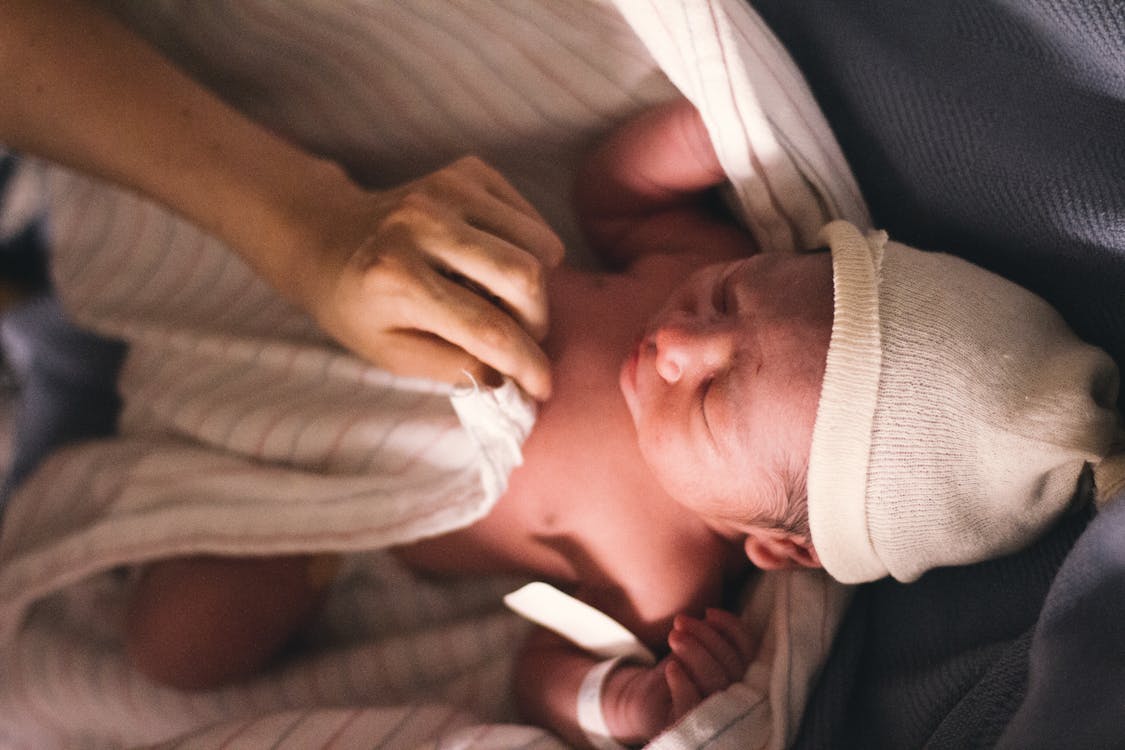Preterm labor symptoms lead to too-early delivery. It occurs before 37 weeks of pregnancy while the baby needs 40 weeks to get fully mature.
What is labor?
Labor is painful and regular uterine contractions leading to cervical dilatation and opening at 10cm
A normal pregnancy lasts 37-42 weeks, starting from the first day of the last menstrual period.
If labor symptoms begin after 20 weeks or before 37 weeks is called preterm labor symptoms.

We can divide labor into three stages
First stage
The contractions start irregularly and mildly which shortens and softens the cervix. This is called the latent phase.
Then contractions become stronger and more regular.
After 3-4cm of cervical dilatation, the active phase begins, characterized by rapid cervical dilatation. when complete cervical dilatation occurs, the second stage begins until delivery of the fetus.
Second stage
- In multiparous person
It doesn't exceed one hour without anesthesia or two hours with anesthesia
- In nulliparous person
It does not exceed two hours without anesthesia or three hours with anesthesia
Third stage
It is the duration between the fetus's delivery until the delivery of the fetal membranes and placenta which takes less than ten minutes.
According to the pregnancy duration, and the time in which preterm labor symptoms happen, we can divide the preterm into four categories
- Extremely preterm: before 25 weeks
- Very preterm: before 32 weeks
- Moderately preterm:32-34 weeks
- Late preterm:34-36 weeks
What are preterm labor symptoms?
They include:
- Light bleeding or vaginal spotting
- A change in the type of vaginal discharge, it may be bloody (tinged pink) or mucus-like
- Mild abdominal cramps and contractions like gas pain with or without diarrhea
- Flu-like symptoms such as vomiting and nausea
- Persistent menstrual-like contractions
- Increase pressure in the vagina or pelvis
- Low, dull pain in the back, maybe constant or temporary. doesn't disappear if you change your position or relaxed
- Water breaking which could be the amniotic fluid
- Six or more contractions in an hour
- If you were preterm yourself
Do age and race affect preterm labor symptoms?
Research has proven that black women are more likely to have permanent labor than any other ethnicity
Also, preterm labor risk increases if you are younger than 17 or older than 35
Causes of preterm labor symptoms
The causes of preterm labor are not obvious or specific, but some causes increase the preterm labor symptoms
The most popular causes are
-The short interval between pregnancies
- Carrying multiples are more likely than singletons(twins, triplets, or more)
- Previous preterm birth, it increases the risk of having a subsequent preterm labor
- Structural anomalies of the cervix and/or the uterus
Incompetent cervix means when the cervix doesn't stay close or short cervical length
Also, the uterus may have structural abnormalities that make it more difficult to carry a baby during the normal pregnancy period
Medical factors that may increase the risk of preterm labor symptoms
Medical cases should be considered and treated as fast as possible to decrease the risk of preterm labor:
- High blood pressure or blood clotting disorders
- Intrahepatic cholestasis of pregnancy
- Diabetes (high blood glucose)and gestational diabetes(occur during pregnancy only)
- Untreated urinary tract infections
- Sexually transmitted infections
- Vaginal infections such as trichomoniasis or bacterial vaginosis
- Placental problems like placenta previa(a case in which the placenta grows in the lower part of the uterus and covers the cervix opening)or placental abruption
How can lifestyle affect the preterm labor symptoms?
A wrong lifestyle may increase the risk of preterm labor so you should avoid these wrong habits such as:
- Poor diet
- Drink alcohol
- Smoke cigarettes
- Stress or anxiety
- Exposure to teratogens like radiation, chemicals, leor harmful substances
- Overweight or underweight before pregnancy
- Illegal or recreational drugs
- No health care during pregnancy
Strict bed rest may be necessary if preterm labor symptoms happen. you should be in bed and can only get up to the bathroom.
How are preterm labor symptoms diagnosed?
If the symptoms start early so the doctor has to check using one of the following
- Examine the cervix, if it is dilated(opened)and effaced(thinned), it may be preterm labor.
- Perform ultrasound, which measures the fetus's size and predicts its position. it also checks the amniotic fluid and the placenta.
- Apply monitor contractions by counting the number of contractions relative to the time.
- Fetal fibronectin test(this is a protein that helps the amniotic sac stick to the uterus): by taking a vaginal fluid sample if this protein appears in the sample this means that labor has begun.
If you have a history of preterm birth, obstetrician recommended to give you progesterone in vaginal suppository dosage form to prevent the preterm labor symptoms
Sometimes cervical cerclage is recommended which means stitching closed the cervix to prevent it from dilating(opening)
Premature birth may be safer for baby and mum than continuing pregnancy
Some health conditions require premature labor such as severe pre-eclampsia
Preterm labor symptoms may force the doctor to decide on delivery
It may be vaginal birth but sometimes it is safer to give birth by cesarean section.

Complications of preterm labor symptoms that affect the baby
In the case of preterm birth, the baby does not spend enough time to have fully mature organs, which may affect some organs' function.
So just after labor, a neonatologist should evaluate the baby to decide whether it needs special care in the NICU or not
The baby may suffer from:
- Bronchopulmonary dysplasia or underdeveloped lungs
- Newborn jaundice (hyperbilirubinemia) due to bilirubin high levels in the blood
- Neonatal sepsis (blood infection)
- Inflammation of the intestines causing necrotizing enterocolitis
- Abnormal blood flow leading to patent ductus arteriosus(PDA)
- Anemia
- Brain bleeding or intraventricular hemorrhage
- Underdeveloped blood vessels in the eyes leading to retinopathy of prematurity (vision problems)
- Low birth weight
- Poor growth
After birth, the baby should keep warm and may need an oxygen mask or breathing tube to help him breathe.
Some babies may need adrenaline injections or CPR (cardio-pulmonary resuscitation).
In some cases, the mum needs to pump breast milk to feed through a bottle or tube because it is difficult for the premature baby to breastfeed.
Complications of preterm labor symptoms that affect the mother
-
Problems bonding with the baby
-
Postpartum depression
-
PTSD (post-traumatic stress disorder)
-
anxiety
How to prevent preterm labor symptoms as much as possible?
Avoid the causes and the risk factors
Eating a balanced diet full of antioxidants and anti-inflammatory elements will reduce the risk of preterm labor symptoms.
Carrots, cabbage, pumpkin, and broccoli..eating sufficient amounts of these veggies will be so useful and help the baby's organs to develop.
Medications used to delay preterm labor symptoms
- Magnesium sulfate is taken IV.
- Corticosteroids develop the fetus's organs like lungs and brain.
- Tocolytics: to stop contractions for 48 hours only.
Take care of your diet and health, avoid the risk factors, and pay attention to pregnancy follow-up. It will prevent preterm labor symptoms and make you and your baby safer
Read more about:


You must be logged in to post a comment.